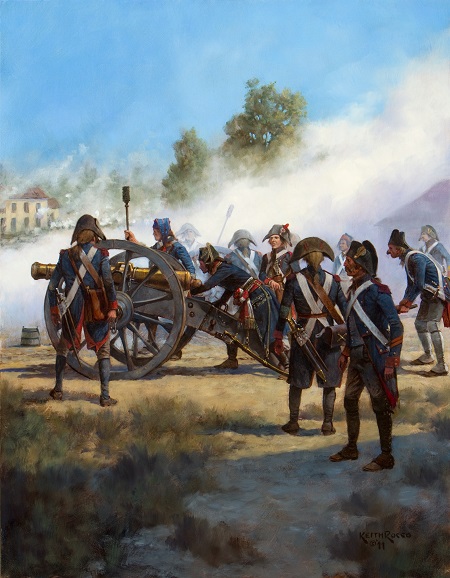Napoleon at Lodi
Description
50 signed and numbered prints
With the Austrian ally Piedmont defeated, Bonaparte now pursued the former, who retreated eastward. Bewildered by the 26-year-old general, Napoleon Bonaparte, and his new way of making war, the Austrians fled, their rear guard hoping to slow Bonaparte down by making a stand at the little Italian village of Lodi.
Fortifying a narrow wooden bridge in Lodi with fourteen cannons and three battalions the Austrians dared the French to cross it. Bonaparte ordered a simple frontal assault on the bridge. Everything depended on the courage of his men. He had earned their admiration with his rapid string of victories. Now he would find out if he also had their faith.
Victory always goes a long way. The more they win the harder they are to stop.
His troops were pretty well hepped up. They’d been chasing Austrians now for
weeks. And they went forward. – Elting
There are no tactics at all. The troops come in so enthusiastically and so quickly,
it surprises the enemy. It’s just a question of enthusiasm, everyone throws
themselves into it, everyone risked death. –Garnier
With his men facing withering enemy fore, Bonaparte led the army by his example.
He was actually laying in the cannon, which is a corporal’s job. But he was
always there with ‘em. –Connelly
He takes physical risks and even if cannon balls fall close to him, and this
happened on several occasions, he is not afraid. –Jourquin
The first French attack made it halfway across the bridge but fell back under a vicious hail of fire. Bonaparte urged them forward once again and, in a final charge, they stormed across and the Austrian guns fell silent.
Here, they thought they were safe behind the river holding the bridge and
all at once the French come across the bridge and beat the living bejesus
out of them. It’s a real spectacular job. It wasn’t a big battle. The casualties
were not particularly heavy, but he imposed his will on his own men and
the enemy both. –Elting
It was not a great victory. The Austrian army had in fact escaped. But Bonaparte had won the respect and devotion of his men.
He came out all sweaty and grimy and covered with gun smoke. The troops
liked that. They began calling him the Little Corporal right there. It was,
“You identify with us.” You’re our corporal. –Connolly
This is the moment when he becomes convinced that he has a lucky star and
that he’s been chosen to accomplish great things. –Jourquin
“They haven’t seen anything yet,” Napoleon told one of his generals. “In our time, no one has the slightest conception of what is great. It is up to me to give them an example.”
The battle at Lodi convinced Napoleon Bonaparte that he was a man of destiny. “From that moment,” he said, “I foresaw what I might be. Already I felt the earth flee from beneath me, as if I were being carried into the sky.”
While he ruled in Italy, Bonaparte never stopped chasing Austrians. Throughout the autumn of 1796, he whittled away at the Austrian army with victories at Castiglione, Bassano and Arcole. In March 1797, just two months after routing the enemy at Rivoli and driving them from northern Italy, he crossed the Alps into Austria itself, and by April 7, 1797, was within seventy-five miles of Vienna.
Stunned by the advancing French armies, the Austrian Emperor sued for peace.
Courtesy; PBS “Napoleon” Series.
Additional information
| Medium | |
|---|---|
| Size | 14" x 11", 18" x 14" |
| Type |
Related products
-
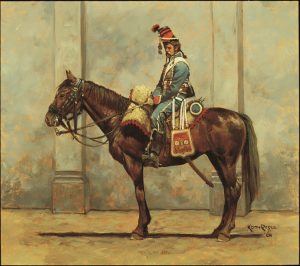
Trooper 1st Hussars-1797 – Original
Read more -
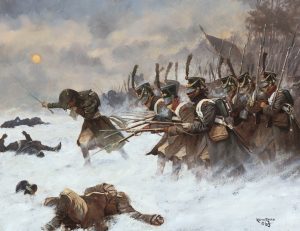
White Misery
$250.00 Add to cart -
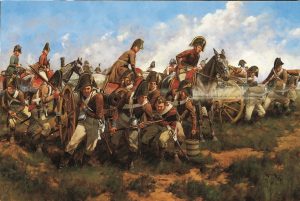
Forward by Bricole!
$345.00 Add to cart -
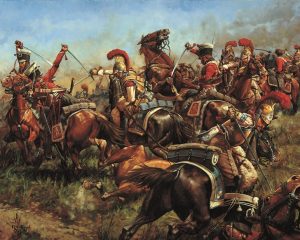
The Melee
$125.00 – $345.00 Select options This product has multiple variants. The options may be chosen on the product page

